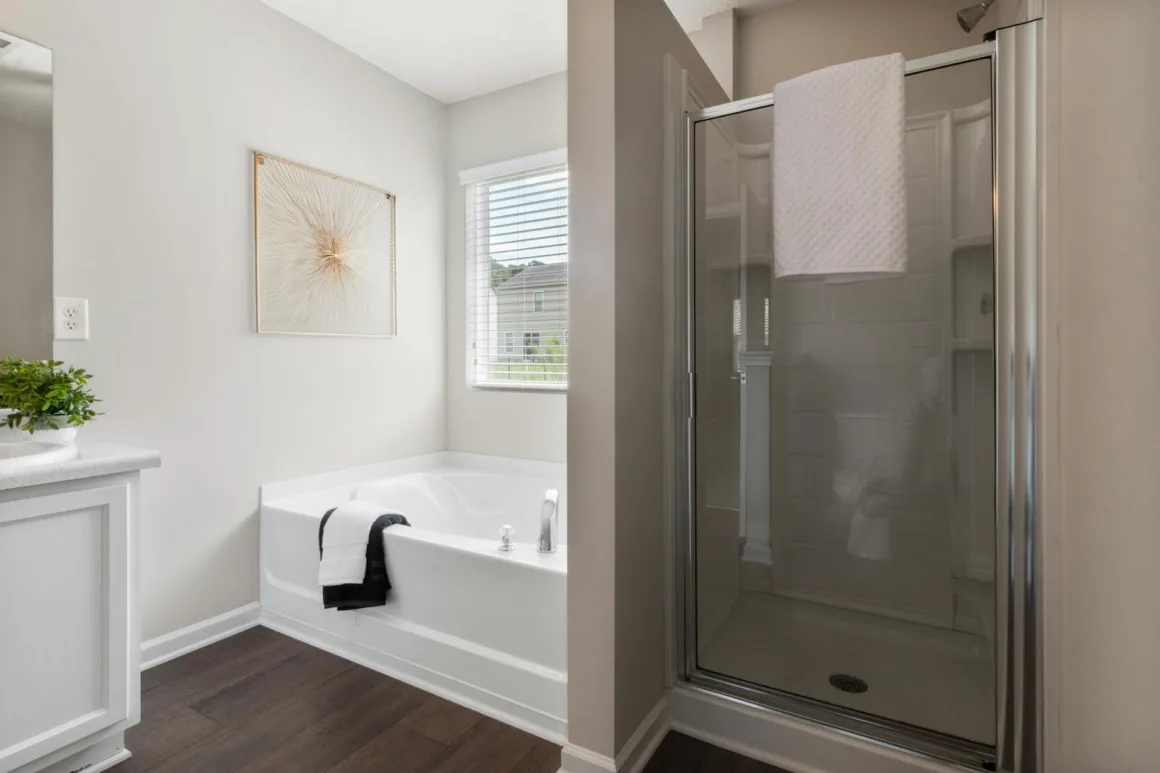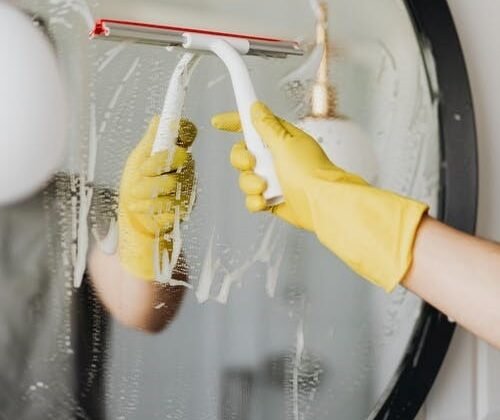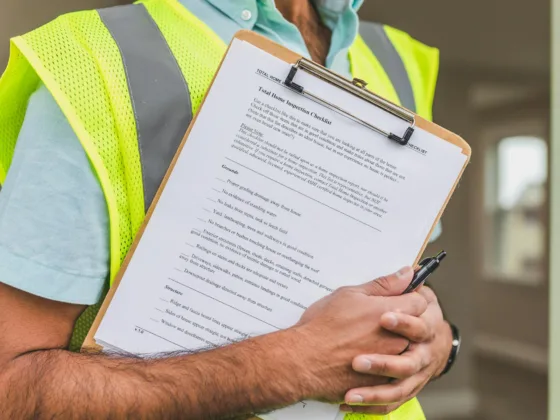Table of Contents Show
Remodeling a bathroom is one of the most popular home improvement projects for a reason. The bathroom is one of the most-used rooms in any home, and modernizing it can greatly enhance both the functionality and aesthetic appeal of the space. Whether you’re planning a small refresh or a complete overhaul, a bathroom remodel can breathe new life into your home while potentially increasing your property value. By working with a home remodeling contractor, you can ensure that the process is efficient and that the results meet your design goals and needs.
In this comprehensive guide, we’ll walk you through the key steps of a successful bathroom remodel, explore the latest design trends, and offer practical tips for choosing the right bathroom remodeling contractor. Whether you’re tackling the project yourself or hiring a professional, this guide will help you make informed decisions that lead to a beautiful and functional bathroom.
1. Why Remodel Your Bathroom?
There are many reasons why homeowners choose to remodel their bathrooms. While some are looking to create a more modern, stylish space, others are focused on making the bathroom more functional or improving energy efficiency. Here are some of the top reasons for a bathroom remodel:
- Increased Home Value: Remodeling a bathroom can provide one of the highest returns on investment (ROI) of any home improvement project. Potential buyers often prioritize updated bathrooms when searching for homes.
- Enhanced Functionality: Outdated bathrooms may lack sufficient storage, have awkward layouts, or not meet the needs of modern living. Remodeling allows you to redesign the space for better usability.
- Improved Comfort: Modern bathroom amenities such as heated floors, luxury showers, and more efficient fixtures can make your daily routine much more enjoyable.
- Energy Efficiency: A remodel provides the opportunity to install energy-efficient lighting, water-saving fixtures, and improved ventilation systems, helping reduce utility costs and environmental impact.
- Updated Aesthetics: Design trends evolve, and your bathroom might be stuck in the past decade. A remodel can help create a fresh, updated look that matches your style.
2. Key Considerations Before Starting
Before diving into your bathroom remodel, it’s essential to think through several key considerations to ensure the project runs smoothly:
- Purpose of the Remodel: Are you remodeling for yourself, or are you planning to sell your home soon? This will determine whether you focus on personal preferences or on making updates that appeal to future buyers.
- Budget: How much are you willing to spend on the remodel? Setting a realistic budget will help you make informed choices about materials, fixtures, and whether to hire a contractor.
- DIY vs. Professional Help: While some aspects of a bathroom remodel (like painting or minor tile work) can be done by DIY enthusiasts, tasks like plumbing, electrical work, and tiling are often best left to professionals to ensure safety and quality.
- Timeframe: How long are you willing to be without a bathroom? Bathroom remodels can take anywhere from a few days to several weeks depending on the complexity of the project.
- Resale Value: If you’re remodeling to increase your home’s value, it’s important to understand which upgrades provide the best return on investment. Focus on modern design, functionality, and energy-efficient features.
3. Current Bathroom Remodeling Trends
Design trends in bathroom remodeling are constantly evolving. Staying updated on the latest trends can help you create a modern, timeless space that feels luxurious and practical. Here are some of the hottest trends in bathroom design today:
1. Minimalist Design
Minimalism is all about simplicity, clean lines, and clutter-free spaces. Many homeowners are opting for sleek, understated designs with neutral color palettes (white, gray, or beige) and minimal ornamentation. This creates a calming, spa-like atmosphere.
2. Freestanding Bathtubs
Freestanding bathtubs have become a popular choice for those looking to add a touch of luxury. These bathtubs can serve as a centerpiece, especially when paired with modern fixtures like floor-mounted faucets.
3. Walk-In Showers
Walk-in showers with frameless glass doors are both stylish and functional. Many homeowners are opting to replace traditional bathtubs with large, open showers that provide a modern aesthetic while maximizing space.
4. Smart Technology
Technology is making its way into the bathroom with features like touchless faucets, smart mirrors with integrated lighting, and even showers that can be controlled via smartphone apps. Smart toilets with self-cleaning functions and heated seats are also gaining popularity.
5. Natural Materials
Many modern bathroom designs incorporate natural materials such as wood, stone, and bamboo. These materials create warmth and texture, making the bathroom feel more like a relaxing retreat. Wood vanities, stone countertops, and pebble-tiled floors are popular choices.
6. Matte Black Fixtures
Matte black faucets, showerheads, and towel bars are becoming a go-to choice for homeowners seeking a bold, contemporary look. These fixtures contrast beautifully with white or light-colored tile, adding a sleek, modern touch.
7. Double Vanities
Double vanities are perfect for shared bathrooms, providing ample space for two people to use the bathroom simultaneously. Homeowners are increasingly opting for custom-built vanities with plenty of storage to keep the space organized and tidy.
8. Heated Flooring
Radiant floor heating is a luxurious addition to any bathroom, especially in colder climates. Heated floors make stepping out of the shower or bathtub much more comfortable and add a touch of indulgence to your daily routine.
9. Large Format Tiles
Larger tiles (12×24 inches or bigger) are becoming more popular in bathroom design. They create a seamless look with fewer grout lines, making the space feel bigger and more modern. These tiles can be used on both floors and walls for a cohesive design.
4. Step-by-Step Guide to Remodeling Your Bathroom
Here’s a step-by-step guide to walk you through the process of remodeling your bathroom, from planning to final touches:
Step 1: Plan Your Layout
Consider the existing layout of your bathroom. Will you keep the current layout, or do you want to rearrange the plumbing and electrical systems? Relocating fixtures like toilets, showers, and sinks can significantly increase the cost and time of the remodel, so it’s important to decide early.
Step 2: Choose Your Design Style
Decide on the overall aesthetic for your bathroom remodel. Will you go for a sleek modern look, a rustic farmhouse design, or a classic traditional style? This will influence the materials, fixtures, and finishes you select.
Step 3: Set a Budget
Based on the scope of your remodel and the design style you’ve chosen, set a budget for the project. Allocate money for fixtures, materials, labor, and any unexpected costs that may arise. Make sure to prioritize your spending on the features that matter most to you.
Step 4: Select Materials
Once your budget is set, begin choosing materials such as tile, countertops, flooring, cabinetry, and lighting. If you’re on a tight budget, look for alternatives that achieve the same look at a lower cost, such as quartz countertops instead of marble.
Step 5: Demolition
If you’re doing a full remodel, this is when you’ll need to remove the old fixtures, tiles, and cabinets. Be sure to shut off the water supply before you begin. Depending on the complexity of the demolition, this step could take several days.
Step 6: Plumbing and Electrical Work
After demolition, it’s time to update any plumbing and electrical work. This might include installing new pipes, adding outlets, or upgrading the ventilation system. It’s best to hire licensed professionals for this stage, as improper installation can lead to costly problems down the line.
Step 7: Install Flooring and Tile
Once the plumbing and electrical work is complete, it’s time to install the flooring and tiles. This is where your design choices start to come to life. Whether you’re using large format tiles or intricate mosaics, proper installation is key to a flawless finish.
Step 8: Install Fixtures
Next, you’ll install the sink, toilet, bathtub, showerhead, and other fixtures. Make sure everything is properly connected and tested for leaks.
Step 9: Cabinetry and Storage
Install your vanity, shelving, and any other storage solutions. Custom-built vanities can provide both style and practicality, offering plenty of storage for toiletries and towels.
Step 10: Final Touches
The final step is installing lighting fixtures, painting the walls, and adding accessories like mirrors, towel bars, and décor. Pay attention to the small details, as they can make a big difference in the overall look and feel of the bathroom.
5. Bathroom Remodeling Costs and Budgeting
Understanding the costs associated with a bathroom remodel is essential to ensuring the project stays within budget. On average, a mid-range bathroom remodel costs between $10,000 and $25,000, depending on the size of the bathroom and the scope of the renovation. Here’s a breakdown of where the money typically goes:
- Labor: 40-60% of the total cost will go toward labor, including plumbing, electrical work, tile installation, and cabinetry.
- Fixtures and Materials: The cost of fixtures, such as bathtubs, sinks, toilets, and faucets, varies depending on quality. Expect to spend anywhere from $2,000 to $10,000 on materials.
- Tile and Flooring: Tile can range in price depending on the material. Ceramic and porcelain tiles are more affordable, while natural stone and custom mosaics can significantly increase costs.
- Lighting: Lighting is an important aspect of bathroom design and can cost anywhere from $300 to $2,000 depending on the fixtures chosen.
- Unexpected Costs: Always set aside 10-15% of your budget for unexpected expenses such as hidden water damage, mold, or plumbing issues.
6. Choosing the Right Bathroom Remodeling Contractor
Hiring the right contractor is crucial to the success of your bathroom remodel. Here are some tips to help you choose the best bathroom remodeling contractor:
1. Check Credentials
Ensure the contractor is licensed, insured, and has the necessary permits to complete the work. A reputable contractor should also provide references from previous clients.
2. Experience and Expertise
Look for a contractor who specializes in bathroom remodels. Ask to see examples of their previous work to ensure their design style aligns with your vision.
3. Read Reviews
Online reviews from past clients can provide insight into the contractor’s professionalism, quality of work, and ability to meet deadlines. Look for consistent positive feedback.
4. Get Multiple Quotes
Don’t settle on the first contractor you find. Get multiple quotes to compare prices, timelines, and the scope of work included in the estimates. This will help you find the best value for your investment.
5. Ask About Warranties
A good contractor should offer warranties on both their work and the materials they use. This ensures you’re protected in case any issues arise after the remodel is complete.
7. DIY Bathroom Remodeling Tips
If you’re considering a DIY approach to your bathroom remodel, here are a few tips to ensure success:
- Know Your Limits: While painting, installing fixtures, or even laying tile can be done by DIY enthusiasts, more complex tasks like plumbing and electrical work should be left to professionals.
- Invest in Quality Tools: Using the right tools for the job can make a significant difference in the quality of your work. Renting or purchasing professional-grade tools is often worth the investment.
- Focus on One Task at a Time: Remodeling a bathroom can be overwhelming, so focus on one task at a time. Start with the most critical aspects, like plumbing or tile installation, before moving on to smaller projects like painting or installing fixtures.
- Be Prepared for Surprises: Even if you’re careful with your planning, unexpected issues can arise, such as hidden water damage or structural problems. Make sure you have a contingency plan in place.
8. Common Bathroom Remodeling Mistakes to Avoid
To ensure your bathroom remodel goes smoothly, avoid these common mistakes:
- Poor Ventilation: Proper ventilation is essential for preventing mold and mildew. Make sure your bathroom has a functional exhaust fan to remove excess moisture.
- Not Considering Storage: Lack of storage can make your bathroom feel cluttered. Incorporate built-in storage solutions like cabinets, shelves, and vanities to keep the space organized.
- Choosing the Wrong Materials: Bathrooms are subject to high humidity, so it’s important to choose water-resistant materials for flooring, walls, and countertops. Avoid materials like hardwood or wallpaper that can warp or peel in humid conditions.
- Ignoring Lighting: Proper lighting is crucial in a bathroom. Use a combination of task lighting (for the vanity), ambient lighting (for the overall room), and accent lighting (for decorative elements) to ensure the space is well-lit.
- Underestimating the Budget: Bathroom remodels can quickly add up. Be realistic about your budget and don’t forget to factor in additional costs like labor, permits, and unexpected repairs.
9. How Long Does a Bathroom Remodel Take?
The timeline for a bathroom remodel can vary depending on the size of the bathroom and the complexity of the project. On average, a bathroom remodel takes between 3 to 8 weeks to complete. Here’s a general timeline:
- Planning and Design: 1-3 weeks
- Demolition: 1-3 days
- Plumbing and Electrical Work: 3-5 days
- Tile and Flooring Installation: 1-2 weeks
- Fixture Installation: 3-5 days
- Final Touches: 1-2 weeks
While these timelines are a good general guide, it’s important to discuss the expected completion date with your contractor before starting the project.
10. Conclusion: Your Bathroom Remodel Journey
Remodeling your bathroom is an exciting opportunity to create a space that reflects your style while enhancing functionality and comfort. Whether you’re updating your fixtures, installing new tiles, or completely reconfiguring the layout, careful planning and execution are key to a successful remodel.
By staying up to date on the latest bathroom design trends, setting a realistic budget, and working with a qualified contractor, you can ensure your bathroom remodel goes smoothly and delivers the results you envision. Whether you’re tackling the project yourself or hiring a professional, a well-done bathroom remodel can transform your home and provide a fresh, modern space you’ll enjoy for years to come.
FAQ:
Remodeling your bathroom can increase your home’s value, enhance functionality, improve comfort, boost energy efficiency, and update aesthetics to match your style. It can provide one of the highest returns on investment among home improvement projects.
Before starting a bathroom remodel, consider the purpose of the remodel, your budget, whether to DIY or hire professionals, the timeframe for completion, and the potential resale value of your upgrades.
Current trends in bathroom remodeling include minimalist design, freestanding bathtubs, walk-in showers, smart technology, natural materials, matte black fixtures, double vanities, heated flooring, and large format tiles.
On average, a bathroom remodel takes between 3 to 8 weeks to complete, depending on the size and complexity of the project. The timeline includes planning, demolition, plumbing and electrical work, tile installation, fixture installation, and final touches.
When choosing a bathroom remodeling contractor, check their credentials (licensing and insurance), experience in bathroom remodels, read reviews from past clients, obtain multiple quotes for comparison, and inquire about warranties on their work and materials used.










